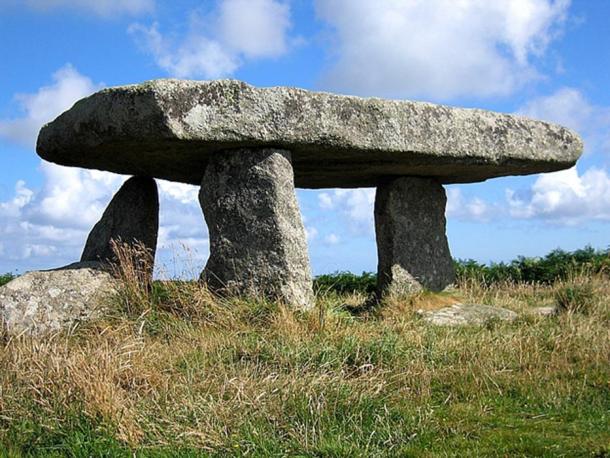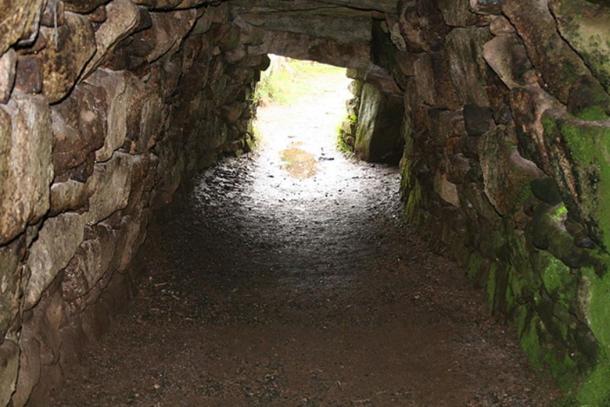In excess of twelve passages have been found in Cornwall, England, that are one of a kind in the British Isles. Nobody realizes the reason why Iron Age individuals made them. The way that the people of yore upheld their tops and agrees with stone, proposes that they believed them should persevere, and that they have, for around 2,400 years.
A large number of the fogous, as they’re brought in Cornish after their promise for cave, ogo, were exhumed by collectors who didn’t keep records, so their motivation is difficult to comprehend, says a BBC Travel story on the puzzling designs.
More than a Dozen Mysterious Prehistoric Tunnels in Cornwall, England, Mystify Researchers reuters
The scene of Cornwall is covered with many antiquated, stone, man-made highlights, including fenced in areas, precipice palaces, roundhouses, bulwarks and fortifications. As far as stone landmarks, the Cornwall field has hand trucks, menhirs, tombs, cairns and obviously stone circles. What’s more, there are 13 engraved stones.
The Cornish scene is dabbed with old massive designs like this Lanyon Quoit Megalith
The Cornish scene is spotted with antiquated gigantic designs like this Lanyon Quoit Megalith ( public space )
“Clearly, all of this landmark building didn’t happen simultaneously. Man has been transforming the outer layer of the planet for millennia and every civilisation has had its own technique for respecting their dead as well as their divinities,” says the site Cornwall in Focus.
The site says Cornwall has 74 Bronze Age structures, 80 from the Iron Age, 55 from the Neolithic and one from the Mesolithic. What’s more, there are nine Roman locales and 24 post-Roman. The Mesolithic dates from 8000 to 4500 BC, so individuals have been involving this southwestern promontory of Britain for a significant length of time.

Around 150 ages of individuals worked the land there. In any case, it’s accepted the fogous date to the Iron Age, which endured from around 700 BC to 43 AD. However they’re remarkable, the fogou passages of Cornwall are like souterrains in Scotland, Ireland, Normandy and Brittany, says the BBC.

Carn Euny fogou in Cornwall ( public area )
The fogous required extensive venture of time and assets “and nobody knows why they would have done as such,” says the BBC. It’s fascinating to take note of that each of the 14 of the fogous have been tracked down inside the bounds of ancient settlements.
Since the general public was preliterate, there are no set up accounts that make sense of the perplexing designs.
“There are a couple that have been exhumed in current times – and they don’t appear to be structures that actually effectively surrender their mysteries,” Susan Greaney, head properties history specialist of English Heritage, told the BBC.
The secret of their development is enhanced at Halliggye Fogou, the best-safeguarded such passage in Cornwall. It estimates 1.8 meters (5.9 feet) high. The 8.4 – meter-long (27.6 feet) entry limits at its end in a passage 4 meters (13.124 feet) long and .75 meter (2.46 feet) tall.
Principal office of the Halliggye Fogou ( public space )
Another passage 27 meters (88.6 feet) long branches off to one side of the principal chamber and gets more obscure the farther in one goes. There is what the BBC calls a “last killjoy” toward the finish of this section that has stone lip whereupon one could trip.
“All in all, none of it appeared to be intended for simple access – a trademark that is as meaningful of fogous as it is confusing,” composed the BBC’s Amanda Ruggeri.
Halliggye Fogou. One of the biggest and best protected of these fogou (inquisitive underground sections) this one initially passed under the bulwark of a shielded Iron Age settlement. (geograph.org.uk)
Some have hypothesized they were spots to stow away, however the lintels of a significant number of them are noticeable on a superficial level and Ruggeri says they would be restricting spots to remain if one looked for shelter.
Still others have guessed they were internment chambers. A classicist who entered Halliggye in 1803 composed that it had funerary urns. Be that as it may, others entered by the opening he made in the rooftop, and every one of the urns are no more. No bones or cinders have been found in the six passages that cutting edge archeologists have analyzed. No leftovers of grains have been found, maybe in light of the fact that the dirt is acidic. No ingots from mining have been found.
This end of capacity, mining or internment purposes has driven some to conjecture that they were maybe stately or strict designs where individuals loved divine beings.
“These were lost religions,” said prehistorian James Gossip, who drove Ruggeri on a visit through Halligye fogou. “We don’t have the foggiest idea what individuals were venerating. There’s not a really obvious explanation they could never have had a formal, profound reason as well as, say, capacity.”
He added that the reason and utilization of the fogous presumably different over the many years they were being used.